Posted in Blog
By Tony Liu, Founder and Principal Business Trial Attorney
In Summary:
The Big Beautiful Bill introduces permanent tax cuts that transform payroll from a liability into a powerful growth lever for business owners. This article breaks down how smart business owners can legally optimize payroll using fringe benefits, tax-free incentives, and strategic compensation plans—without triggering IRS red flags. Discover how to reduce tax burdens, retain top talent, and protect your bottom line with actionable strategies that align with the bill’s pro-growth incentives. To discuss your specific business, contact our Newport, CA business litigation lawyer today.
 Why Payroll Is Your Most Underrated Power Lever
Why Payroll Is Your Most Underrated Power Lever
Most business owners view payroll as a static cost, an inevitable line item on the P&L. But when aligned with permanent tax legislation like the Big Beautiful Bill, payroll becomes a tool for leverage. Not only can it be optimized for maximum ROI, but it can also become a strategic advantage in talent acquisition, retention, and capital preservation.
What Is the Big Beautiful Bill?
Pro-Business Tax Framework for the Long Haul
The Big Beautiful Bill refers to a sweeping legislative package focused on delivering permanent, pro-growth tax cuts. Unlike temporary tax holidays, these reforms create lasting shifts in how businesses can structure their operations and compensation models. For businesses, this comes with multiple pros and cons.
Key Pillars
- Lower corporate and pass-through tax rates
- Expanded tax-free fringe benefit options
- Streamlined deductions for qualifying wages
- Encouragement of small business reinvestment
These provisions give employers the tools to legally reduce their tax obligations while increasing employee value—without raising salaries.
Permanent Tax Cuts: A Strategic Payroll Advantage
Corporate & Pass-Through Rate Reductions
The bill solidifies lowered tax rates for both corporations and pass-through entities, which translates into more retained earnings. With the help of our Newport business litigation lawyer, business owners can reinvest this margin into compensation structures that optimize both employer and employee outcomes.
Enhanced Deductions and Write-Offs
Business owners can now:
- Deduct up to 100% of certain qualified wages
- Utilize the Section 179 deduction to expense major equipment and software purchases upfront
- Leverage Qualified Business Income (QBI) deductions for eligible pass-through entities
These deductions work in concert with optimized payroll to free up capital for innovation, hiring, and growth.
Planning Across Multi-Year Horizons
Permanence means predictability. That makes it easier to model employee compensation and benefits across five, ten, or even fifteen-year timeframes, critical for businesses planning an exit or succession strategy.
Tax-Free Tips: Smart, Legal Ways to Boost Compensation
IRS-Approved Fringe Benefits
The average business owner underutilizes tax-free compensation strategies. The IRS allows a host of non-taxable benefits, including:
- Educational assistance (up to $5,250/year per employee)
- Dependent care assistance
- De minimis benefits (snacks, occasional meals, event tickets)
A full list of fringe benefits can be found in IRS Publication 15-B.
Health, Retirement, and Wellness Perks
The Big Beautiful Bill expands the usability of health savings accounts (HSAs) and flexible spending accounts (FSAs). These tax-advantaged tools can now be embedded more deeply into compensation strategies.
- HSA Contributions: Triple tax advantage—pre-tax contributions, tax-free growth, and tax-free withdrawals for medical use.
- 401(k) Match Enhancements: Lower employer tax liabilities while providing high-perceived value for employees.
- Wellness Stipends: Structured properly, these can be tax-free to employees and deductible for the company.
New Allowances Under the Big Beautiful Bill
The bill allows employers to reimburse for:
- Remote work expenses
- Commuting and parking
- Childcare support
- Emergency and disaster relief payments (within set limits and guidelines)
How This Turbocharges Payroll Strategy
Turn Payroll Into a Margin Multiplier
Using a mix of tax-free perks and intelligent compensation planning, one business restructured $300K in annual payroll to include fringe benefits, saving nearly $90K annually in tax obligations, without reducing take-home pay for staff.
Attract and Retain the Right Talent
Savvy employees increasingly evaluate total compensation, not just salary. Non-taxable benefits provide lifestyle enhancements and flexibility, making your firm a more attractive place to stay long-term.
Strengthen Loyalty, Reduce Turnover
When employees feel their compensation is both fair and thoughtfully structured, they stay. Tax-free benefits like tuition support or wellness reimbursements signal a long-term investment in their growth.
Don’t Get Burned: Compliance and Risk Management
Common Pitfalls
- Misclassifying employees as independent contractors
- Overstating deductions for ineligible fringe benefits
- Failing to document reimbursements properly
Audit Red Flags
According to the Taxpayer Advocate Service, small businesses with high ratios of fringe benefits to wages often trigger IRS scrutiny. Documentation and intent are critical.
Mitigating Risk
- Use payroll software with built-in compliance rules
- Regularly review benefit programs with a tax attorney
- Maintain clear, signed agreements for all fringe-related compensation
The Legal Edge in Payroll Structuring
Why Legal Counsel Is Essential
While CPAs can execute payroll, they don’t build legal strategy. Attorneys ensure all compensation structures are bulletproof under IRS code and ready for audit scrutiny.
When to Bring in a Business Attorney
- Revising executive compensation plans
- Creating or exiting partnerships
- Navigating mergers or acquisitions
A legal strategist can ensure payroll structures don’t backfire during business transitions or regulatory reviews.
Elevate your business: Legal Concierge Counsel
FAQ: People Also Ask About the Big Beautiful Bill and Payroll Strategy
1. What is the Big Beautiful Bill?
The Big Beautiful Bill refers to legislation that implements long-term tax reforms favoring small and mid-sized businesses. It reduces tax burdens, expands fringe benefit options, and encourages reinvestment into payroll and growth.
2. How can I reduce taxes through payroll?
You can lower taxable income by integrating fringe benefits, increasing retirement plan contributions, and leveraging deductions under the Big Beautiful Bill—such as Section 179 and QBI deductions.
3. What are tax-free benefits I can offer my employees?
Common tax-free benefits include health savings account contributions, educational assistance, commuter reimbursements, and occasional meals or employee gifts, all governed by IRS Publication 15-B.
4. How do I ensure I’m compliant with IRS rules on payroll?
Maintain strong documentation, classify workers correctly, and consult a legal or tax professional to structure benefits and compensation in line with IRS standards.
5. Can I restructure my business payroll to take advantage of this bill?
Yes. Many businesses restructure executive and staff compensation models to reduce taxable income, boost retention, and reinvest in tax-efficient strategies using tools supported by the bill.
Stop Bleeding Cash Through Outdated Payroll Strategies
Business owners who continue to treat payroll as a static cost are losing out, both in cash and in competitive edge. High performers are leaving for companies that offer flexible, lifestyle-enhancing compensation. Margins are shrinking under the weight of overtaxed structures. And worse, poor documentation around fringe benefits could expose your business to IRS audits and penalties.
The Big Beautiful Bill provides a new blueprint—if you’re willing to use it.
But legal and financial clarity is key. One wrong step can turn a tax-saving strategy into a compliance nightmare.
If you’re navigating a toxic partnership, restructuring your business, or looking to shield your legacy from risk, it’s time to get serious about how payroll fits into your legal strategy. Our California business litigation lawyer is here to help.
Schedule a consultation with Focus Law LA today to see how your business can leverage the Big Beautiful Bill to reduce taxes, reward your people, and accelerate growth.
 Why Payroll Is Your Most Underrated Power Lever
Why Payroll Is Your Most Underrated Power Lever